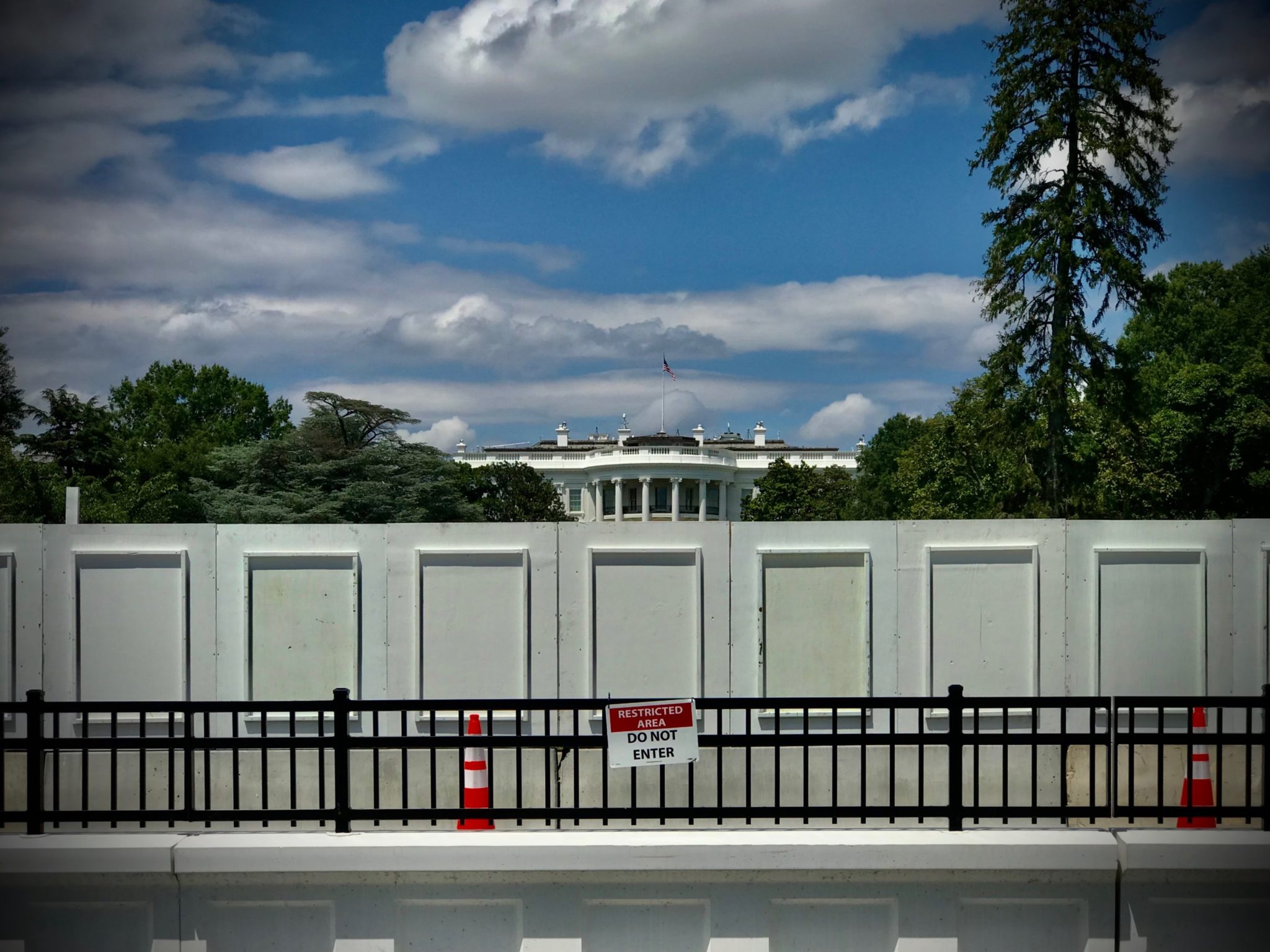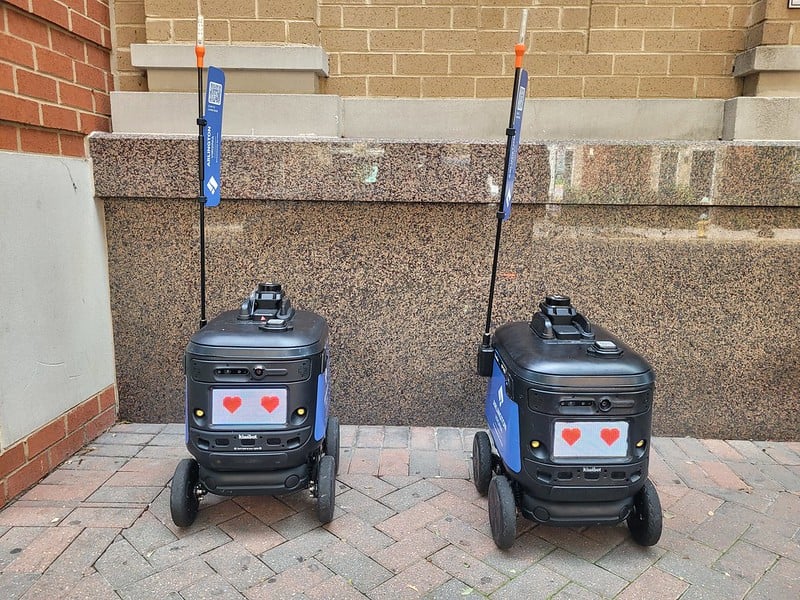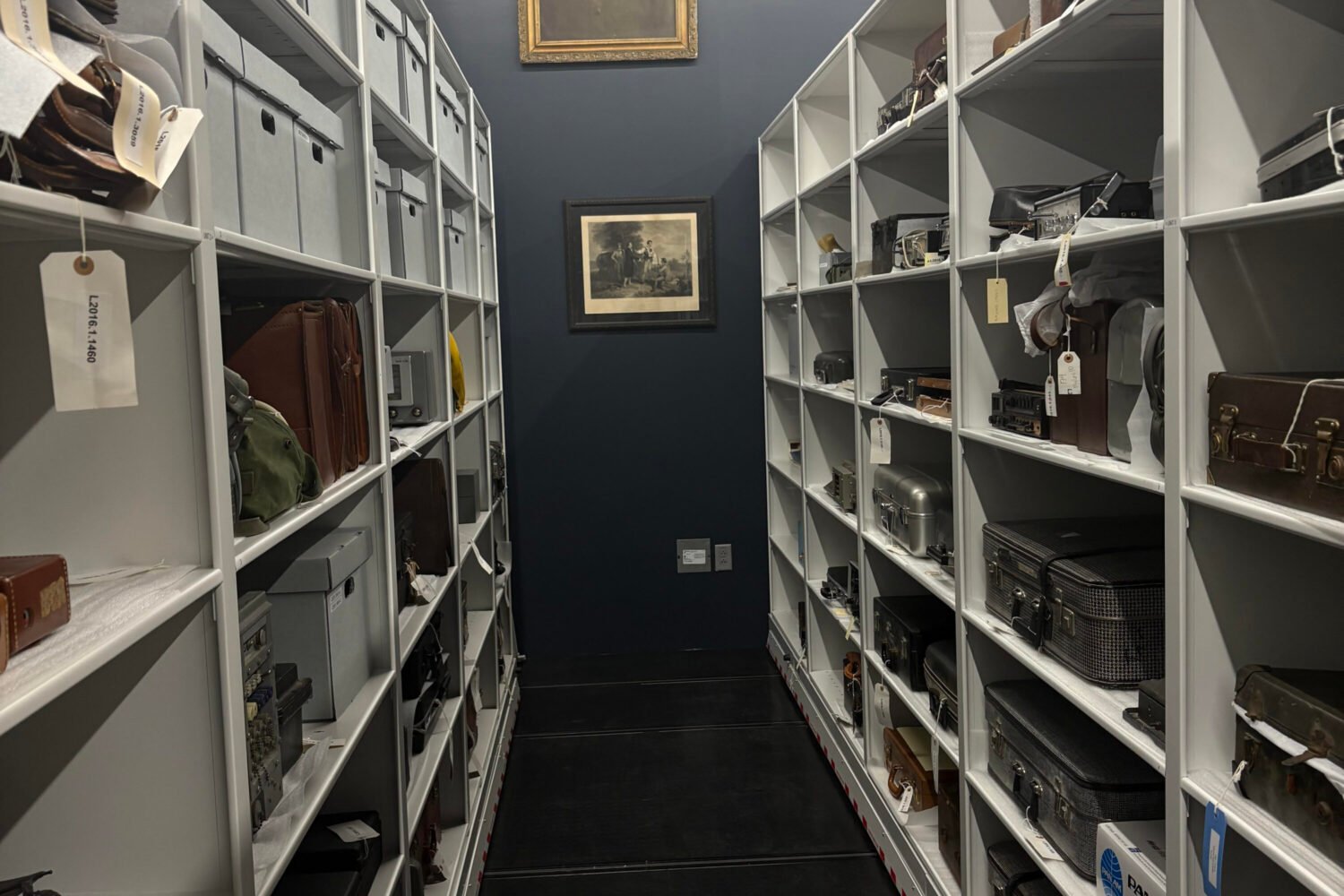Last week, I walked around the White House twice. The first time, when I merely had to navigate the barriers that went up after the protests following the George Floyd killing, it took me a little more than a half-hour. By the time I came back for a second lap a few days later, a previously open pedestrian path in the Ellipse had been closed off. So it now took about 45 minutes.
And the place remains a fortification-construction site. Access to the pedestrian mall on Pennsylvania Avenue has been cut off since the first night of the protests that followed George Floyd’s death, and even though the protesters have gone, it will remain cut off at least for the rest of the summer. Meanwhile, a long-planned project to replace the White House fence with a higher one has recently occasioned a large white-painted wooden wall along the south side of the complex, which means the closest view most people can get of the “People’s House” is part of its top floor. The Secret Service closed the sidewalk along E Street in 2017, so you have to trek through a maze of “bicycle rack” barriers and police tape in the Ellipse to see even that.
The story of the White House cutting itself off from the surrounding city is nearly as old as the United States, and spans all parties. Thomas Jefferson was aghast at the idea that the President might live in anything resembling a palace, and for years the building and its grounds were startlingly open. Presidents used to greet visitors in the East Room every day at lunchtime. In 1841, a drunk threw stones at President John Tyler while he perambulated the South Grounds. Security was gradually hardened as the republic turned into a superpower. But even after two world wars, the grounds were often breached—notably in 1974 by an Army private in a stolen helicopter who touched down on the South Lawn before losing a dogfight with Maryland State Police by the Washington Monument.
In the age of terrorism, the building became much more difficult to approach. After the 1995 Oklahoma City bombing during Bill Clinton’s presidency, Pennsylvania Avenue, which used to be a thoroughfare crowded with cars and busses, was turned into a pedestrian mall between 15th and 17th streets. After 9/11, even pedestrian traffic was cut off for three years, a time when Washington City Paper dubbed the District “Jersey Barrier City.” In fact, when the current fence-raising effort began, advocates said it would enable them to take down these sort of improvised barriers that keep people away from the property line. I wouldn’t bet on it.
I started my walks both times from Black Lives Matter Plaza, near the spot where authorities tear-gassed protesters on June 1 so President Trump could execute a bizarre photo op in front of St. John’s Church. The space, which starts at 16th and H streets, Northwest, was exponentially quieter than it was in mid-June, when it was packed with street performers, protesters, families, live-streamers, TV reporters from foreign outlets, and vendors lining the sidewalks. Now, in the brain-melting heat of late July, the plaza was mostly empty, save for the odd group of people wearing lanyards one day and a few others posing in front of Mayor Bowser’s “Black Lives Matter” mural on another.
The high fence that blocked access to Lafayette Square Park was decorated with photographs of people killed by police and anti-Trump slogans. Looking through it, you could see several rows of barricades in places—Jersey barriers, bollards, more bicycle-rack fencing—vestiges of the protests. Clark Mills’ statue of Andrew Jackson reared absurdly in the distance, surrounded by even more fencing. Beyond that, you could just make out the White House.
The Park Service told me it needs to keep the barriers up at Lafayette Square to assess damage from the protests, damage that by now is two months old. The Secret Service doesn’t intend to take down the barriers where 15th and 17th streets meet Pennsylvania Avenue until the end of August, saying they’re necessary for the White House fence replacement project, even though: 1) it previously issued a press release saying they were security measures because of the demonstrations; and 2) Pennsylvania had been largely open since construction on the fence project began last July.
About a dozen Secret Service police hustled out of the New Executive Office Building as I headed south on 17th Street on my second trip, as signs mounted that someone important was about to Do Something. Police vehicles paused along the street, flashers on, and I hustled across the intersection with Pennsylvania Avenue, spurred by the very Washington worry that I’d get caught waiting for a motorcade. Some people I passed, visitors to Washington, were hoping for exactly the opposite and urged me to stay put if we wanted to see the President’s car. I decided not to explain I was actually here to look at fences.
The Ellipse is no longer closed off completely, even though the closure of the E Street sidewalk means you have to walk through the mostly useless park’s twisty paths to get to a White House view. On my first trip, I made it to the Zero Milestone and could just see the top of the White House. On my second, that vantage was closed off, so I had to walk all the way around the Ellipse, past a demonstration that urged a Congressional investigation into Vanessa Guillen’s death, and along Constitution Avenue to 15th Street. It was, too, mostly quiet, with February-sized crowds in the middle of what would normally be high tourist season. (I passed one guy wearing a shirt that said “Waterboarding Instructor.” Would you like to guess whether he was wearing a mask?)
President Trump’s position to the rest of DC was a defensive crouch even before the pandemic and the George Floyd protests. In contrast to the Obamas, he hasn’t visited a single restaurant that wasn’t in his hotel a few blocks away, for instance. His trips to the Saint John Paul II shrine in Northeast and to Walter Reed could be among his longest car trips in the District. That makes the barriers seem higher and the bicycle rack fences more appropriate for guarding a trench at the Somme than for protecting the executive mansion.
A few years ago my family and I showed a Russian friend around DC, and when we stopped by the White House, she noted how unfamiliar it was to her that we know where our President lives, and that we could get so close to the building. She’d be a lot more comfortable with the current arrangement.




















